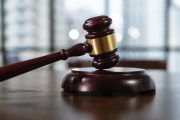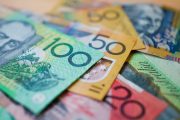
Thousands of Australians commemorated Australia Day, the country’s national holiday, on January 26 with gatherings to advocate for the nation’s Indigenous people, many of whom portray the anniversary of the day a British fleet sailed into Sydney Harbour as “Invasion Day.”
In Sydney, the capital of New South Wales — Australia’s most populous state — social-media photographs and video clips depicted a large crowd at an “Invasion Day” rally in the central business district, where some people held Aboriginal flags and an Indigenous smoking ceremony took place.
Similar protests happened in other Australian state capitals, including in South Australia’s Adelaide, where around 2,000 people were present, based on reports from the Australian Broadcasting Corporation (ABC).
In a speech at a flag-raising and citizenship ceremony in Australia’s capital, Canberra, Prime Minister Anthony Albanese commemorated the nation’s Indigenous people, who have occupied the land for thousands of years.
“Let us all recognise the unique privilege that we have to share this continent with the world’s oldest continuous culture,” Albanese declared.
Although it was a “difficult day” for Indigenous Australians, there were no plans to move the holiday’s date to another day, he said.
A yearly survey by market research company Roy Morgan unveiled this week revealed that almost two-thirds of Australians were in favor of January 26 to be regarded as “Australia Day,” mostly the same proportion from last year. The rest thought that January 26 should be “Invasion Day.”
In light of the contentions surrounding the day, some firms have exercised flexibility around observance of the holiday. For example, Australia’s largest telecommunications company, Telstra, offered its staff the option to work on January 26 and take another day off this year.
“For many First Nations peoples, Australia Day … marks a turning point that saw lives lost, culture devalued, and connections between people and places destroyed,” Telstra chief executive Vicki Brady posted on LinkedIn.
Many of Australia’s 880,000 or so Indigenous people have been alleged to be trailing behind the rest of the country’s 25 million citizens in the economic and social domains, in what the government terms as “entrenched inequality.”
This year’s protests came amid Albanese’s center-left Labor Party government’s plans to hold a referendum on acknowledging Indigenous people in the constitution, and mandating talks with them on policies that impact their lives.
The government is hoping to unveil legislation in March to establish the referendum that will occur later in the year, as the Indigenous voice develops as a major federal political issue.
The constitution, which came into effect in January 1901 and cannot be amended without a referendum, did not include the country’s Indigenous people.
Australian Indigenous Affairs Minister Linda Burney earlier posited that the Indigenous voice to Parliament would enable Aboriginal and Torres Strait Islander people to offer advice at all government levels on laws and policies influencing their lives as well as tackle long standing “housing, health and educational” disparities, The Guardian reported.
“It’s about drawing a line on the poor outcomes from the long legacy of failed programs and broken policies, and listening to Aboriginal and Torres Strait Islander people,” she posited.
“Things like incarceration and child removal. Housing, health and educational outcomes. This voice is about making sure that what happens in the federal parliament is going to be a positive step forward both in terms of us as a nation, but also the life outcomes for First Nations people in Australia.”
However, some speakers at this year’s protests in central Sydney rejected the proposed Indigenous voice to Parliament as a “box-ticking exercise” that would not have any meaningful changes, the Sydney Morning Herald reported.
One of the protesters in Sydney, Vivian Macjohn, opined that the rally against the national day was a display of support for Indigenous people. “I think it’s important that we show up and we mourn with them and stand in solidarity,” she said.
Notably, it was only until 1935 that all states and territories in Australia started using the name “Australia Day” to commemorate 26 January, and it only became a nationwide public holiday in 1994.
Moreover, this public holiday has been the day thousands of people officially become Australian citizens at citizenship ceremonies across the country. Nonetheless, for Aboriginal Australians, who had occupied the land for thousands of years prior to the arrival of the British, Australia Day has been generally deemed as a day of mourning, with the terms “Invasion Day,” “Survival Day,” or “Day of Mourning” used instead.
As such, many fly the Australian Aboriginal flag at half-mast and wear black clothing to protests and memorial events as a symbolic display of mourning. Furthermore, there have been calls for Australia Day to be moved to a less-contentious date.
Yet historian Kate Darian-Smith from the University of Tasmania said that if the date of Australia Day was to change, it would be an admission that people do not see January 26 as a meaningful date for modern-day Australia.
“There’s been quite a lot of work in recent years to show that Australia Day is quite inclusive of recent migrants, of people from all parts of the world — we’re all Australian, we’re all together, we’re all part of our country,” she said. “How do you scoop up and make an inclusive celebration on what is a day that, if we take it back historically, is commemorating that moment of British landing and invasion?”
Darian-Smith also said Australia Day commemorates the first night on shore in Sydney Cove and the formal establishment of the colony of New South Wales. The date was subsequently alluded to as “First Landing Day” or “Foundation Day.” “By the early 1800s dinners were being held to mark the foundation of the new colony of NSW,” she told SBS News.




